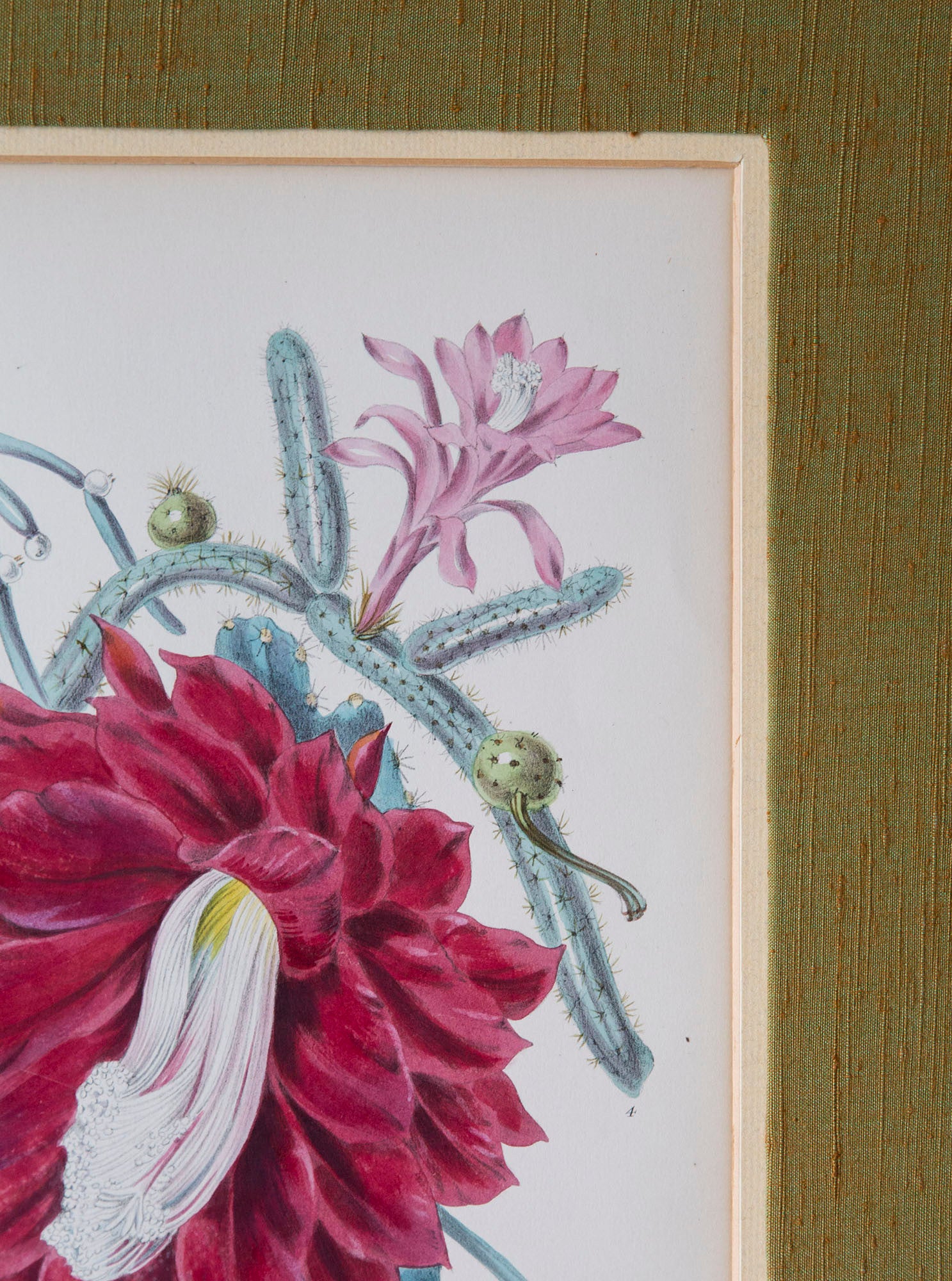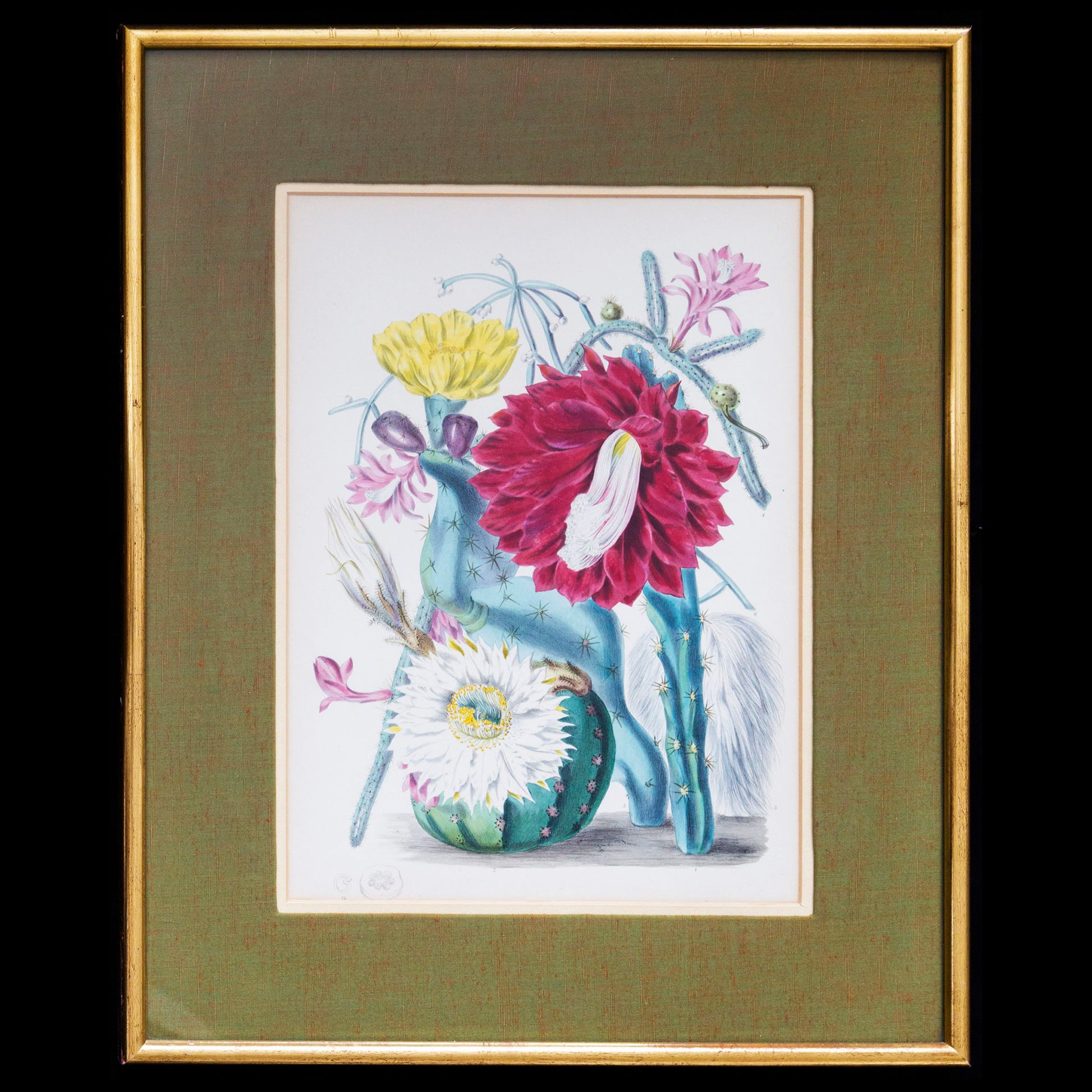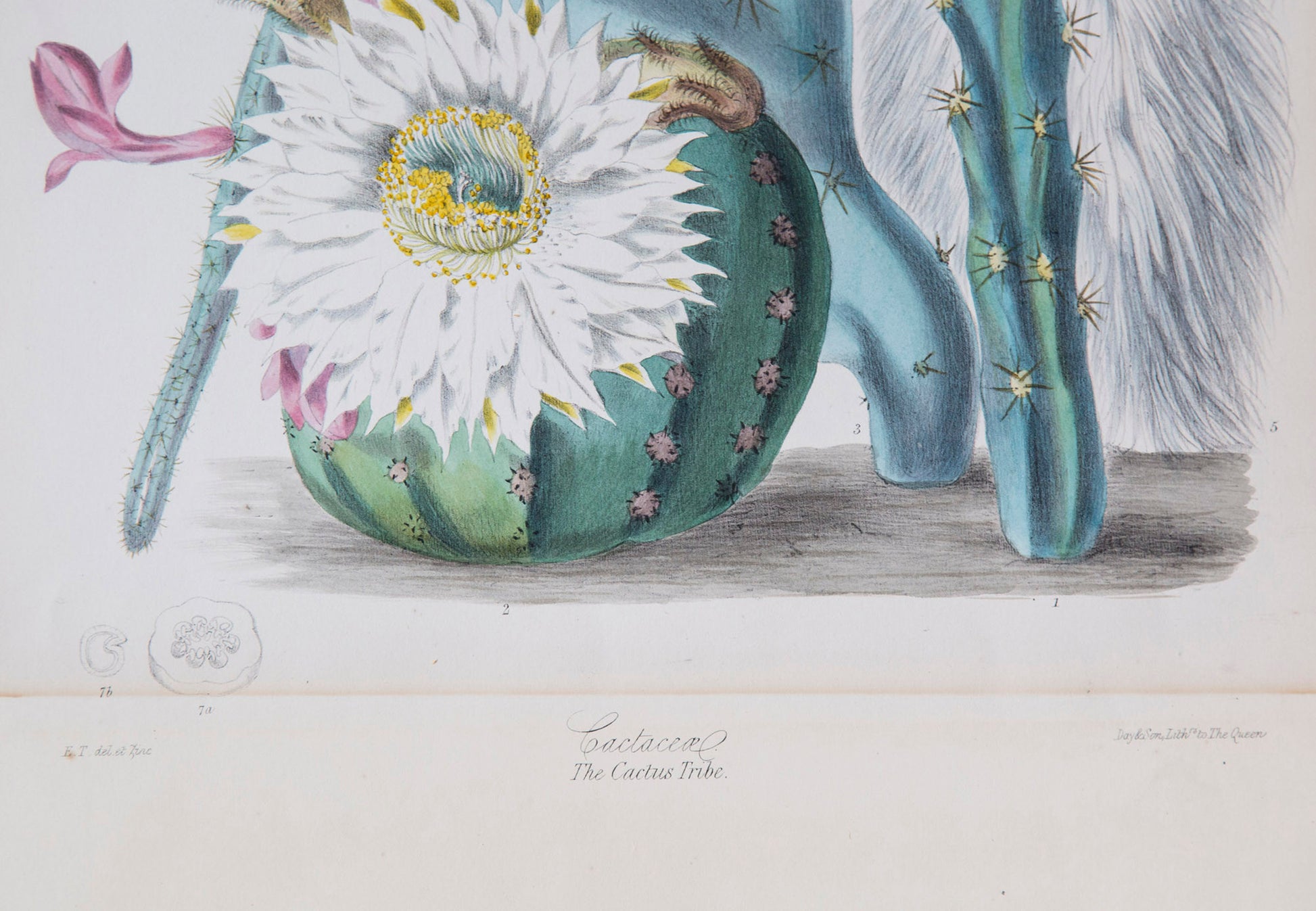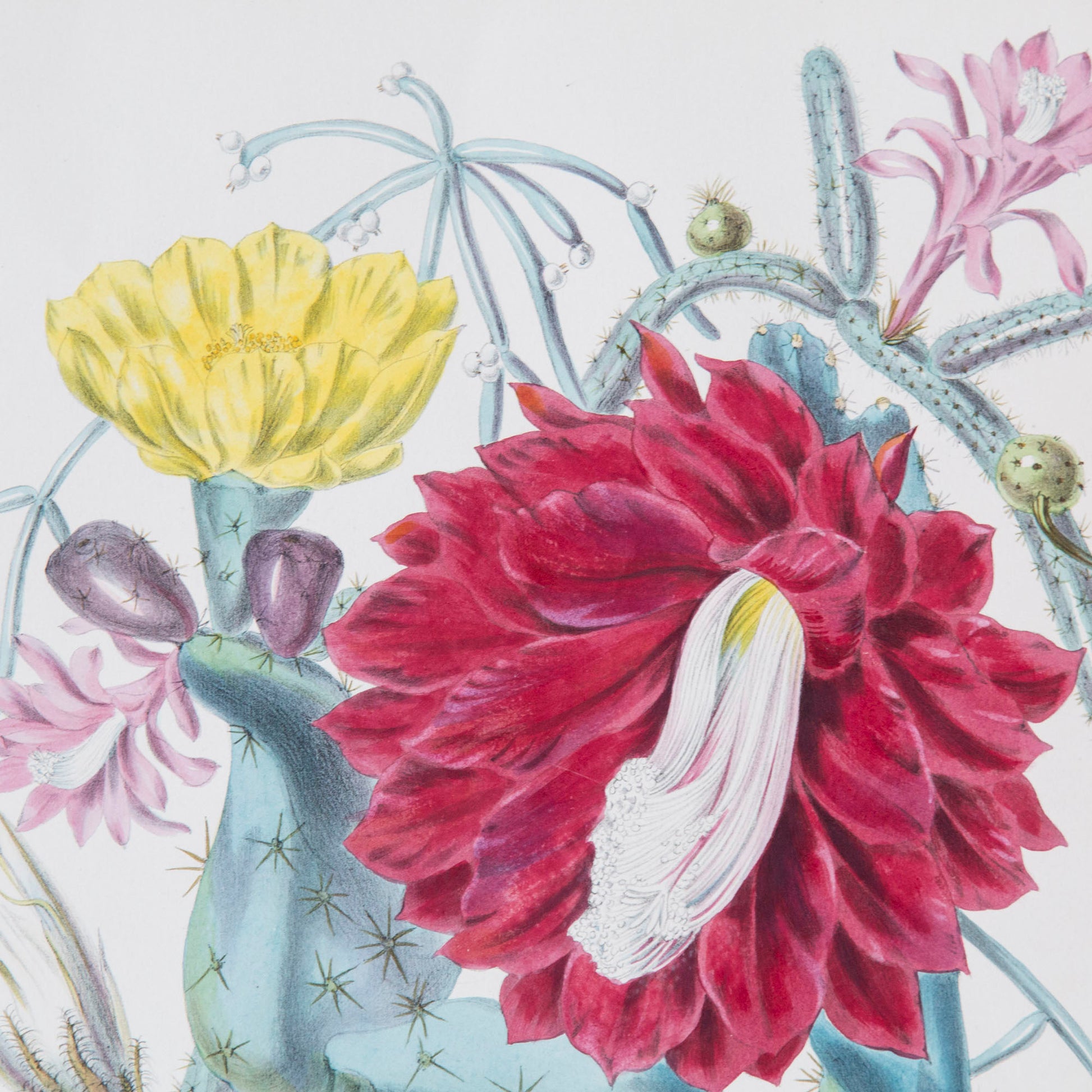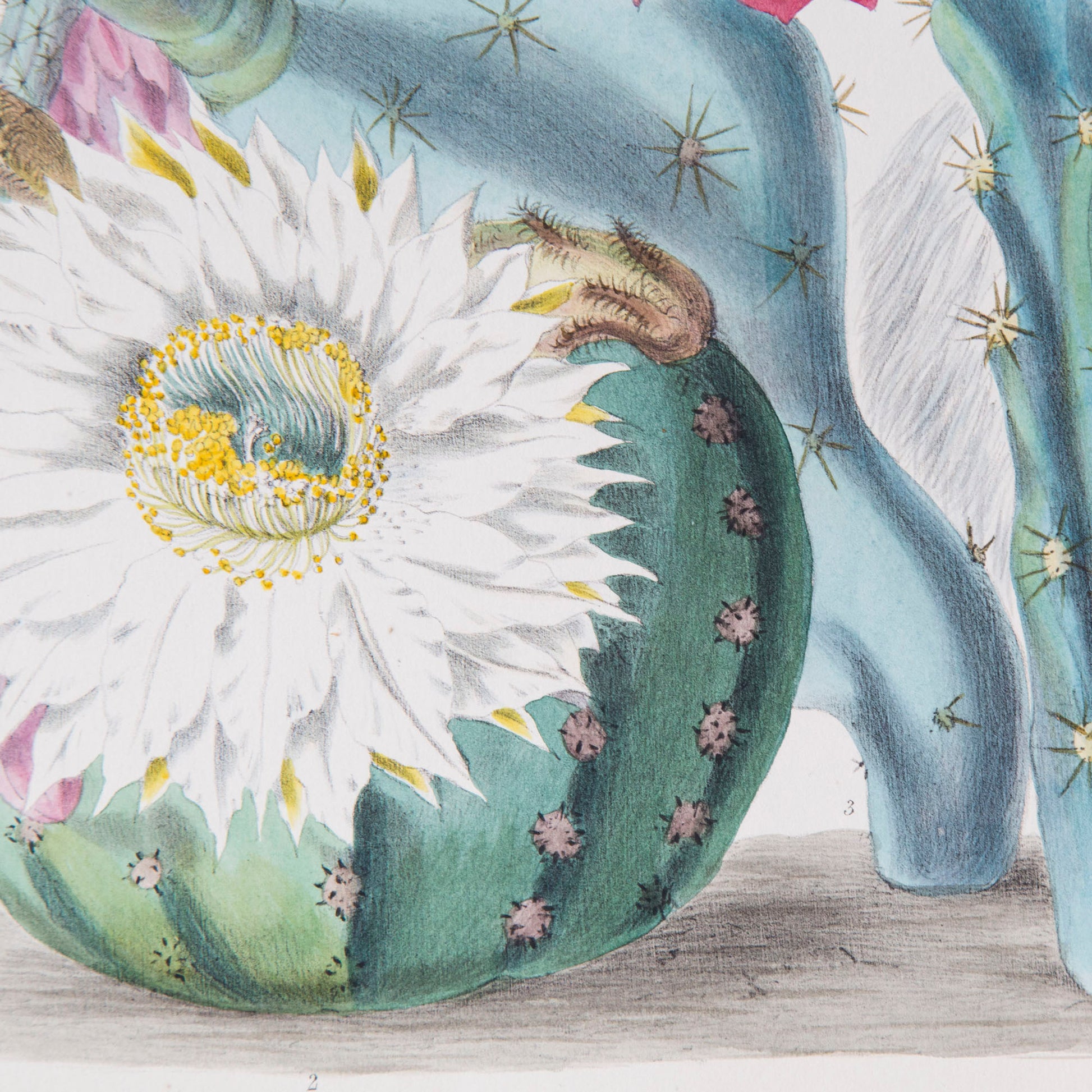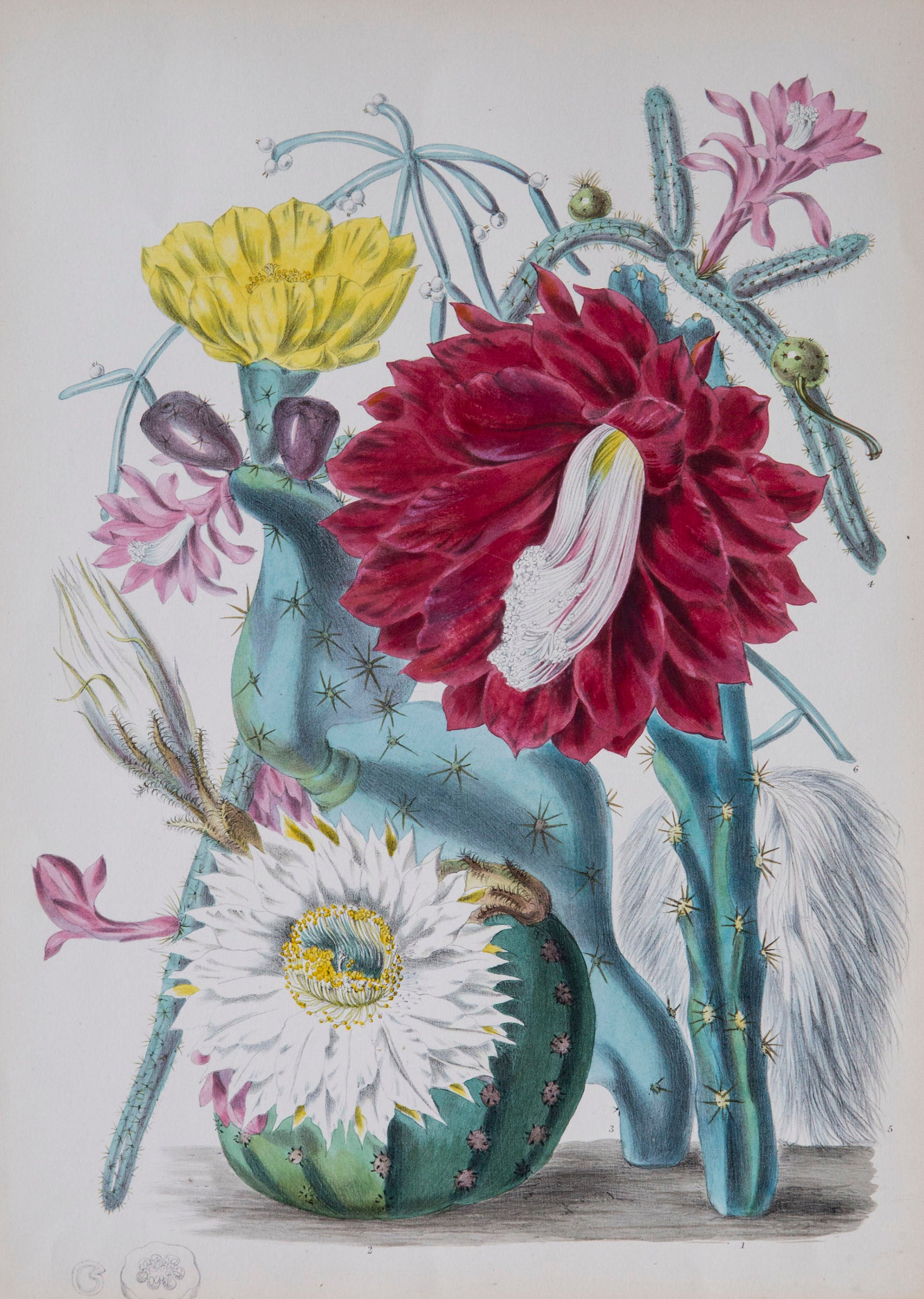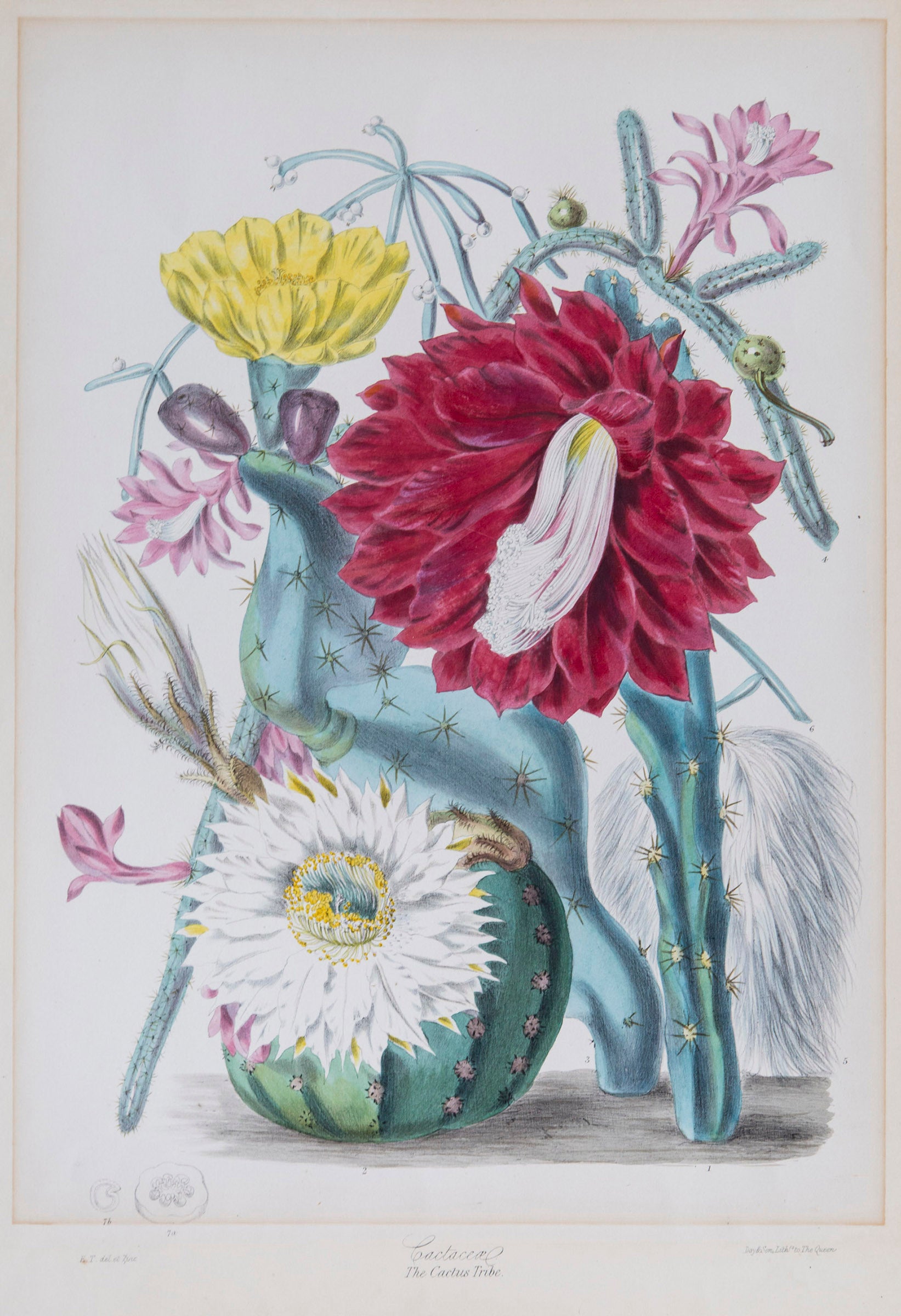








An exceptional quality mid-19th century botanical print from Illustrations of the Natural Order of Plants Vol. I, London: Joseph Cundall, and Day and Son, 1849, by Elizabeth Twining (1805-1889).
Hand-coloured lithograph printed from zinc plate, by and after Twining, printed by Day & Son. Plate 65 from Vol. 1, rare first edition (1849).
Why we like it
Considered one of the finest botanical illustrations ever produced, the work of Elizabeth Twining is artistically superb and pleasing to look at.
A riot of colour, vibrant and succulent, exquisitely hand-coloured and beautifully framed.
The fine plates depict plants arranged by botanical families using de Candolle's classification. Where a family is known to include a British member this is included, and each plate includes between two and seven members of each family. This method produces fascinating groupings of plants seldom seen together: British with Amazonian, Italian with Himalayan, etc. The plants are generally arranged with a fine artistic sensibility on the plate, but clearly retain a careful regard scientific accuracy.
Elizabeth Twining was a member of the Twining tea dynasty. Her upper-class education and background enabled her to pursue personal interests in art and botany. She wrote various books on flowering plants, including 'Illustrations of the Natural Orders of Plants'. Although intended as a new approach to the already established classification systems, its illustrations resemble those in popular horticultural publications.


